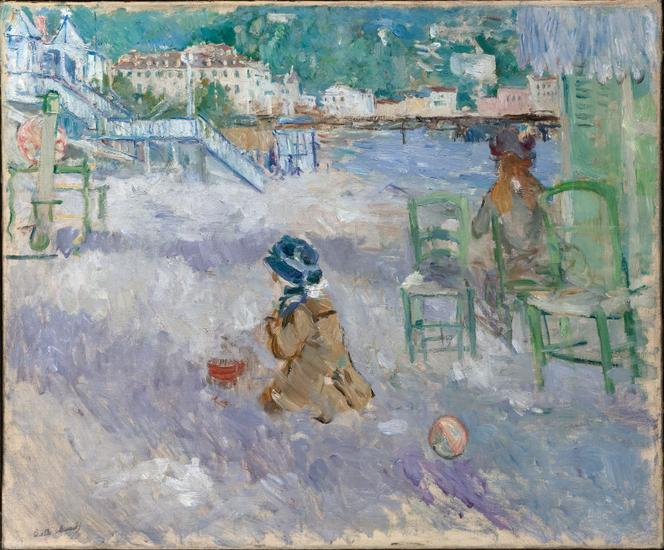

A flurry of exhibitions has been scheduled in France to celebrate the 150th anniversary of Impressionism, featuring not only works that are closely related to this movement, but also works by contemporary artists who focus on the changing effects of light, color and time. Le Monde has selected ten of them, to offer a glimpse of the sea or children's faces as seen by painters of the period, Berthe Morisot's South, Marc Desgranchamps' encounter with Normandy landscapes or the neon lights installed by Laurent Grasso in the ruins of Jumièges Abbey.

In 1874, in photographer Nadar's studio in Paris, the first exhibition of the Cooperative Society of Artists took place, which would become, thanks to a malicious critic, the Impressionist movement. Only one woman, Berthe Morisot (1841-1895), took part. Born into high society (her father was a prefect, then a magistrate at the Court of Auditors), she proved to be a rebel and a painter, taking lessons from Corot. She took part in seven of the eight Impressionist exhibitions.
According to a critic at Le Figaro, "in her, feminine grace is maintained amid the outbursts of a delirious mind," but this was the first time a woman had been recognized as an important figure in an avant-garde movement.
She spent two winters in Nice, in 1881-1882 and 1888-1889. The Musée des Beaux-Arts Jules Chéret in Nice has decided to evoke these two periods, bringing together – no mean feat – almost all the paintings produced during these winters, some 60 canvases. They are set against works by Renoir and Monet, also painted on the shores of the Mediterranean, including Les Villas à Bordighera, which Monet gave to Morisot and which she kept all her life.
"Berthe Morisot à Nice, escales impressionnistes" ("Berthe Morisot in Nice: Impressionist stopovers"), Musée des Beaux-Arts Jules Chéret, Nice, from June 7 to September 29.

It's a rare case: After four decades of paintings that have never seemed particularly close to Impressionism, a contemporary artist, Marc Desgrandchamps, voluntarily subjected himself to the test of Normandy landscapes that are commonly associated with the names of Degas, Monet or Pissarro.
He spent time in the Pays de Caux natural region and on the coast. He took visual notes, then he returned to his studio in Lyon and got down to work: Work that is inextricably linked to memory, the eye and the hand that applies color. Elements of what he had seen appear in the form of traces and – it is necessary to use this word – impressions.
You have 79.89% of this article left to read. The rest is for subscribers only.
